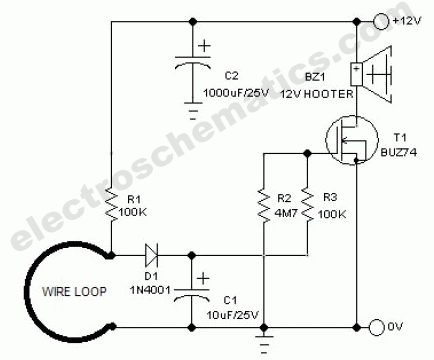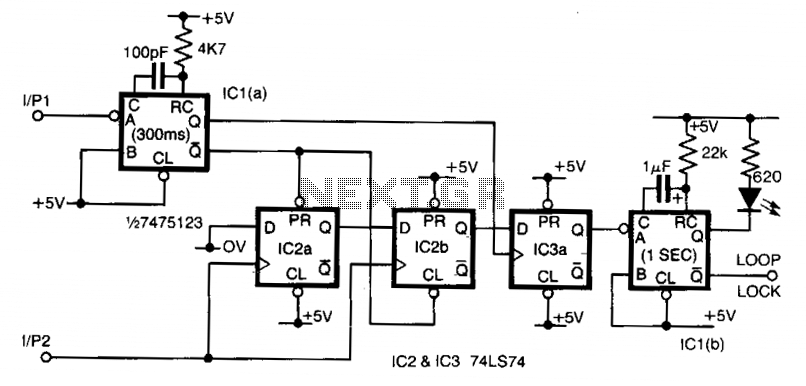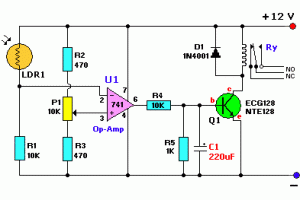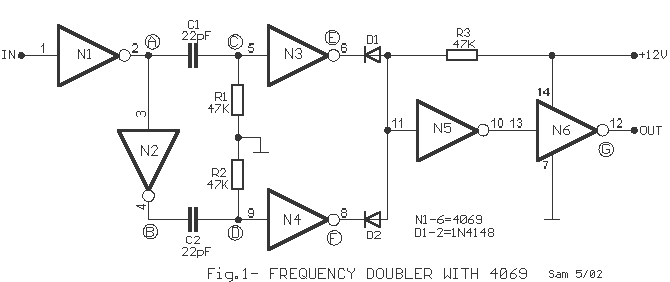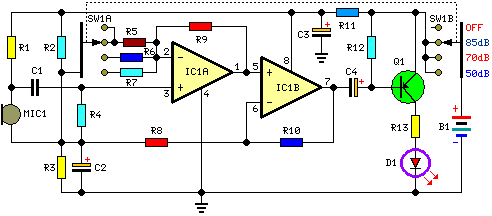
Frequency counter BNC input schematic

This is a CMOS-compatible (and ideally also TTL-compatible) input that includes over-voltage and under-voltage protection. Schmitt triggers are utilized to accommodate inputs with long transition times. It has been verified to function at frequencies up to 30 MHz.
The described circuit functions as a robust input interface suitable for both CMOS and TTL logic families. The incorporation of over-voltage and under-voltage protection ensures that the circuit can withstand voltage levels beyond its specified operating range, thus safeguarding downstream components from potential damage.
Schmitt triggers are a critical component in this design, providing hysteresis that enhances the circuit's tolerance to noisy signals and allows for reliable operation even when input signals have slow rise and fall times. This feature is particularly beneficial in high-speed applications where signal integrity can be compromised by slow transitions.
The circuit's capability to operate at frequencies up to 30 MHz indicates that it can be effectively used in high-speed digital applications, making it suitable for interfacing with various sensors, microcontrollers, and communication devices.
For implementation, the design may include a series of resistors and capacitors to set the appropriate time constants for the Schmitt trigger inputs, ensuring optimal performance. Additionally, careful consideration should be given to the selection of input protection components, such as transient voltage suppressors (TVS) or zener diodes, to effectively clamp any excessive voltage levels while minimizing signal distortion.
Overall, this circuit design represents a versatile solution for applications requiring reliable logic level interfacing with inherent protection features and high-speed performance capabilities.This is a CMOS-compatible (and hopefully also TTL) input featuring over- and under-volatage protection. Schmitt triggers are used to allow for input with long transition times. Verified to work up to 30MHz. 🔗 External reference
The described circuit functions as a robust input interface suitable for both CMOS and TTL logic families. The incorporation of over-voltage and under-voltage protection ensures that the circuit can withstand voltage levels beyond its specified operating range, thus safeguarding downstream components from potential damage.
Schmitt triggers are a critical component in this design, providing hysteresis that enhances the circuit's tolerance to noisy signals and allows for reliable operation even when input signals have slow rise and fall times. This feature is particularly beneficial in high-speed applications where signal integrity can be compromised by slow transitions.
The circuit's capability to operate at frequencies up to 30 MHz indicates that it can be effectively used in high-speed digital applications, making it suitable for interfacing with various sensors, microcontrollers, and communication devices.
For implementation, the design may include a series of resistors and capacitors to set the appropriate time constants for the Schmitt trigger inputs, ensuring optimal performance. Additionally, careful consideration should be given to the selection of input protection components, such as transient voltage suppressors (TVS) or zener diodes, to effectively clamp any excessive voltage levels while minimizing signal distortion.
Overall, this circuit design represents a versatile solution for applications requiring reliable logic level interfacing with inherent protection features and high-speed performance capabilities.This is a CMOS-compatible (and hopefully also TTL) input featuring over- and under-volatage protection. Schmitt triggers are used to allow for input with long transition times. Verified to work up to 30MHz. 🔗 External reference
